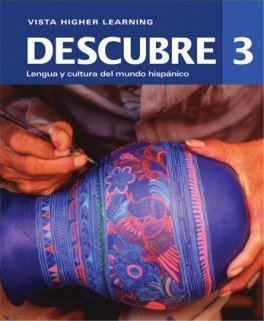
All Solutions
Page 316: Despues de leer
***
|ORDER |SENTENCE |
|–|–|
|**8** | *a. The lazy bee wins the test.* |
| **1**|*b . The guardians let the lazy bee into the hive, but warn her that it will be the last time.* |
|**5** |*c. A snake announces that it is going to devour her.* |
| **10**|*d. The guardians let in the bee that is no longer lazy.* |
|**2** |*e. The bee promises to change, but doesn’t follow through.* |
|**7** |*f. The snake makes its test successfully.* |
|**9** |*g. The bee returns to the hive after spending the night out* |
|**3** | *h. The guardians forbid him to enter the hive.*|
|**6** |*i. The snake proposes to do two tests.* |
|**4** |*J. The bee falls down a hole into a cave.* |
***
If you feel lost just look for the part you need to correctly place the sentence in the order.*
* **Mientras las otras abejas abejas trabajaban duro, la abeja haragana no le importaba ni hacia nada.** / *While the other bees were hard at work, the lazy bee didn’t care or do anything.*
* **Es el ser que observa y juzga activamente a la abeja.** / *It is the being that actively observes and judges the bee.*
* **Una plantita la salvo, se trataba de una sensitiva.** / *A small plant saved it, it was a sensitive one.*
* **Que si uno quiere salir adelante hay que esforzarse en ello.** / *If you want to get ahead, you have to work hard at it.*
* **Creo que describen cuando uno se encuentra dentro y fuera de su zona de confort.** / *I think they describe when you are in and out of your comfort zone.*
* **Me parece bien que lo hagan y tienen razón, pues se le advirtió a la abeja las consecuencias de sus actos.** / *I think they are right to do so, and they are right, for the bee was warned of the consequences of its actions.*
* **La miel sirve para alimentar a las abejas bebe y es importante que toda la comunidad trabaje para el desarrollo de la misma.** / *Honey is used to feed the baby bees and it is important that the whole community works for its development.*
* **La abeja recapacito cuando vio lo difícil que es la vida afuera de la colmena.** / *The bee came to his senses when he saw how difficult life is outside the hive.*
* **Sí estoy de acuerdo, Uno tiene que aprender y darle el valor al trabajo y a lo que se nos da.** / *Yes, I agree, one has to learn and give value to the work and to what is given to us.*
* **Sí, al ver que fue aceptada nuevamente en el panal.** / *Yes, seeing that she was accepted back into the hive.*

